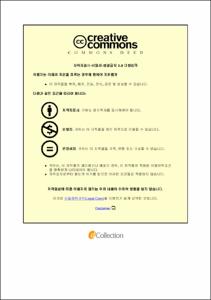Characterization of Cypress (Chamaecyparis obtusa) Extract by Pressurized Hot Water Extraction
- Alternative Title
- 가압열수추출법을 이용한 편백나무 (Chamaecyparis obtusa) 추출물의 특성에 관한 연구
- Abstract
- Chamaecyparis obtusa is one of the cypress which have highest phytoncide compared with other wood. Because of this reason, it is used as a source of essential oil and most of studies focused on the functionality of C. obtusa essential oil. The main component of the wood is cellulose (about 60%) and lignin (about 25%), although the cypress is interested only in the production of essential oil due to its interest in phytoncide. This cellulose and lignin of the wood can produce saccharide and aromatic compounds, and the leaves is including flavonoids. In this study, Pressurized hot water extraction (PHWE) was used to extract those materials. Pressurized hot water extraction refers to water above its subcritical temperature and pressure which is kept in liquid state. It is a distinctly different behavior compared to water at ambient conditions due to the dramatic changes in physical properties, namely dielectric strength and ionic product, which in turn can easily be altered by changing temperature and pressure. These behaviors cause hydrolysis, which decompose peptide bonds, ester bonds, and glycosidic bonds without addition of catalysts. In recent trends of extract processing, ‘green technologies’ have been received attention. Pressurized hot water extraction is the one of green technologies which can natural ingredients without using toxic or chemical organic solvents. Moreover, Pressurized hot water extraction is cleaner, faster, and cheaper than conventional methods.
PHWE was performed at a temperature range of 120-240 °C, and a pressure range of 35-110 bar. The pressure was increased to 35, 50, 65, 70 and 95 bar which set 30 bar before operating the system and 50, 60, 80, 90 and 110 bar which set 50 bar before operating the system with nitrogen gas. The reaction time was 10 minutes, the stirring speed was 150 rpm, and the ratio of the sample and solvent was 1:45. The results were expressed by comparing the initial pressures (30 bar and 50 bar). The maximum yield of hydrolysates recovered by PHWE was at 240 °C and 110 bar in both wood and leaves. At higher pressure and temperature, the higher yields were obtained. Total phenolic compounds (TPC) and total flavonoid compounds (TFC) were measured to determine the content of phenol compounds according to the hydrolysis of lignin by various temperatures and pressures. The wood hydrolysate showed the highest phenolic compounds at 240 °C and 95 bar, and leaves hydrolysates showed phenolic compounds content decreased, but increased at around 210 °C. Antioxidant and anti-inflammatory activity were examined in order to confirm the effect of phenol compounds. Antioxidant activity was similar to that of phenolic compound, but anti-inflammatory activity was reversed. It is presumed that phenolic compounds originally contained in wood are decomposed at high temperature and pressure, and phenolic compounds produced by lignin decomposition do not exhibit anti-inflammatory activity. Total sugar content and reducing sugar content of the wood hydrolysate showed the highest value at 240 °C and 110 bar, but the highest sugar contents of leaves hydrolysate was shown at 120 °C and 35 bar and reducing sugar contents was shown at 150 °C and 50 bar. Compared with the result, the optimal hydrolysis temperature and pressure condition could be set as 240 °C and 110 bar for wood, and 120 °C and 35 bar for leaves.
The initial pressure of 50 bar indicates that some of the activities and useful material contents are higher than 30 bar, but it is difficult to judge that there is a significant difference.
- Issued Date
- 2017
- Awarded Date
- 2017. 2
- Type
- Dissertation
- Publisher
- 부경대학교 대학원
- Affiliation
- 부경대학교 대학원
- Department
- 대학원 식품공학과
- Advisor
- 전병수
- Table Of Contents
- Introduction 1
Materials and Methods 4
1. Materials 4
2. Sample preparation 4
3. Method 4
3.1. Proximate composition 4
3.2. Pressurized hot water extraction (PHWE) 5
3.3. Phenolic compounds in hydrolysate 7
3.3.1. Total polyphenol content assay 7
3.3.2. Total flavonoid content assay 7
3.4. Antioxidant activity of hydrolysate 8
3.4.1. DPPH radical scavenging capacity 8
3.4.2. ABTS radical scavenging capacity assay 9
3.5. In-vitro anti-inflammatory 10
3.6. Analysis of sugar content in hydrolysate 11
3.6.1. Total sugar content 11
3.6.2. Reducing sugar content 11
3.7. Analysis of volatile organic compounds 12
3.8. Color measurement 12
Results and Discussion 13
1. Proximate composition 13
2. Hydrolysis yield 13
3. Phenolic compound content 17
3.1. Wood hydrolysate 17
3.2 Leaves hydrolysate 19
4. Antioxidant activity 19
4.1. DPPH free radical scavenging capacity 19
4.2. ABTS radical scavenging capacity 22
5. In-vitro anti-inflammatory activity 24
6. Sugar content 27
6.1. Total sugar content 27
6.2. Reducing sugar content 27
7. Volatile organic compounds composition 30
8. Color 30
Conclusion 38
Reference 42
- Degree
- Master
- Files in This Item:
-
-
Download
 Characterization of Cypress (Chamaecyparis obtusa) Extract by Pressurized Hot Water Extraction.pdf
기타 데이터 / 918.1 kB / Adobe PDF
Characterization of Cypress (Chamaecyparis obtusa) Extract by Pressurized Hot Water Extraction.pdf
기타 데이터 / 918.1 kB / Adobe PDF
-
Items in Repository are protected by copyright, with all rights reserved, unless otherwise indicated.